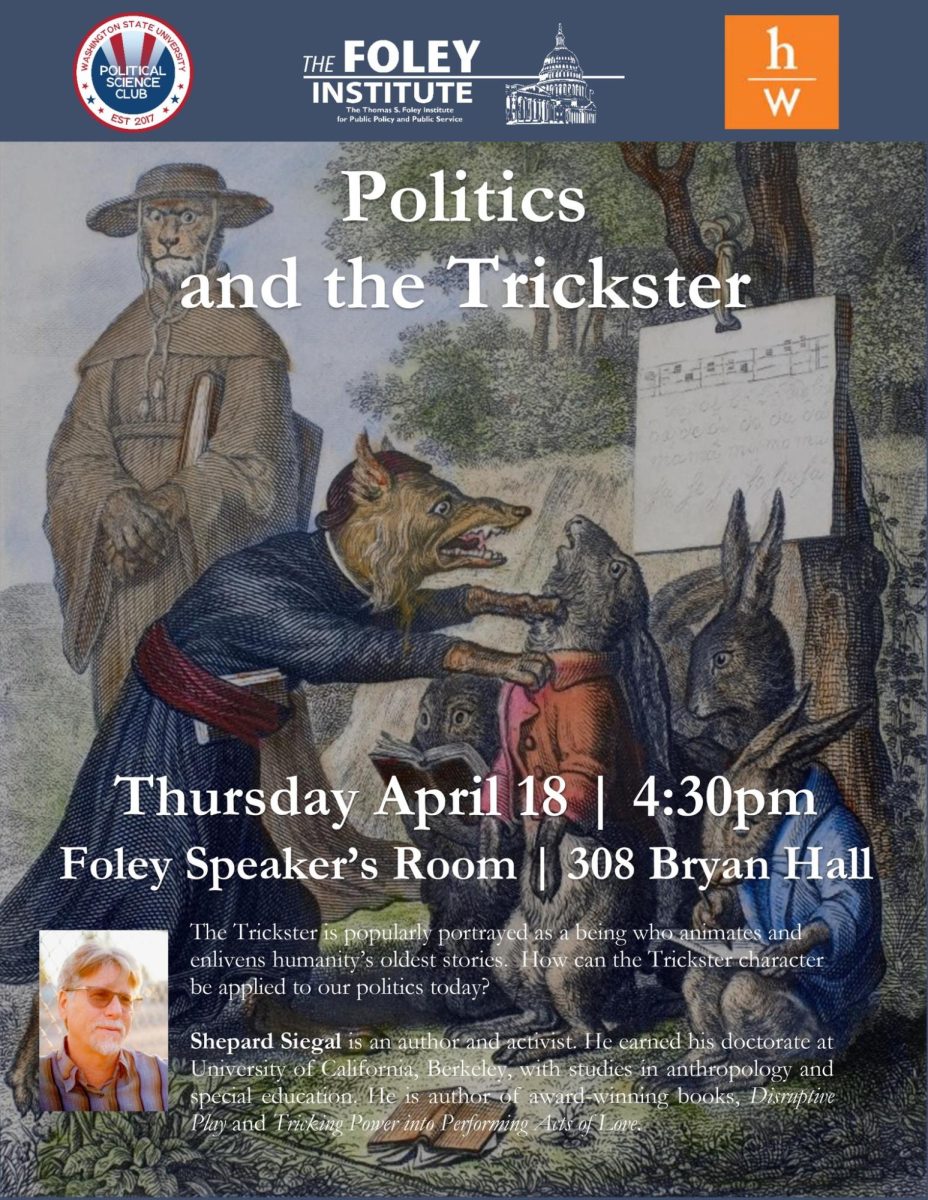Author Shepherd Siegel related the “trickster character” to today’s political climate at 4:30 on April 18 for the final Foley Talk of the semester.
Siegel said tricksters are characters who like to test the rules and that there is one in every crowd who wants to challenge the rules. The trickster fights power with mockery and ridicule instead of with power. The character Loki from The Avengers is an example of a trickster.
“If I wrote a book about all the great generals of the world. .. you’d know immediately what I’m talking about,” he said. “If I wanted to talk to you about the great tricksters of the world … people are like, ‘I don’t want to hang out with someone who’s going to trick me.’”
There is a difference between a conman and a trickster, Siegel said. A conman is looking to get someone from the person they are tricking, such as money or their vote, while a trickster only looks to cause mischief with no personal benefit.
Adults who retain the ability to be playful the way they were when they were children consciously or unconsciously engage with the trickster archetype, he said.
“The thing about [tricksters] is they’re not evil but they’re not good either,” Siegel said. “They represent this morally indeterminable state.”
There are ten attributes to the trickster, they embody all the character archetypes, they are liars and saviors, morally indeterminate, time travelers, boundary-crossers, dupes and players of tricks, loners, lovers of food and sex and they are a first principle, as you often do not know their origins, he said.
Tricksters are liars and saviors, meaning they do lie often, but they also accomplish the greater good, he said. Trickster stories are among the oldest known to humanity.
“To be a true trickster you have to have the ability to be humiliated,” he said. “Number two, you not only play tricks but tricks are played on you.”
Bugs Bunny is the great American trickster and is a personification of the trope, Siegel said. Since he is a cartoon character, he is also the perfect archetype of the trickster.
As they are nearly good or evil, tricksters often only attempt to target those in power. An example of the time-traveling tricksters attribute would be Bill and Ted. Each of the ten trickster attributions are followed by Bill and Ted in their movie.
In the political sense, tricksters are an inherent part of the political system who cannot be killed or gotten rid of, but you would not want to elect them, Siegel said. Volodymyr Zelensky of Ukraine could be classified as a trickster by some due to being a comedian before getting elected.
A real-life example of a trickster would also be Mae West, an actress who often wrote her own movies, he said. In the late 1920s and early 1930s, her films were very risque and helped lead to the creation of the film rating system.
The Dada art movement during World War I is another real-life application of the trickster archetype, Siegel said. From 1914-1920, the art movement often involved making purposely ridiculous art, which eventually translated into the surrealist movement.
The greatest political trick of all time took place during the Vietnam War. Abbie Hoffman, founder of the Yippie political party, helped organize an anti-war demonstration in Washington DC, he said. The protesters went to the Pentagon as it was the greatest concentration of military power in the world.
Hoffman held a meeting with those who work in the Pentagon and told them he planned to have the protesters encircle the Pentagon and levitate it 300 feet in the air. The media chose not to cover the protest as they believed it was a trick to get attention, Siegel said. However, by humiliating the government on the world stage, some commentators say the protesters’ mission was accomplished.
















